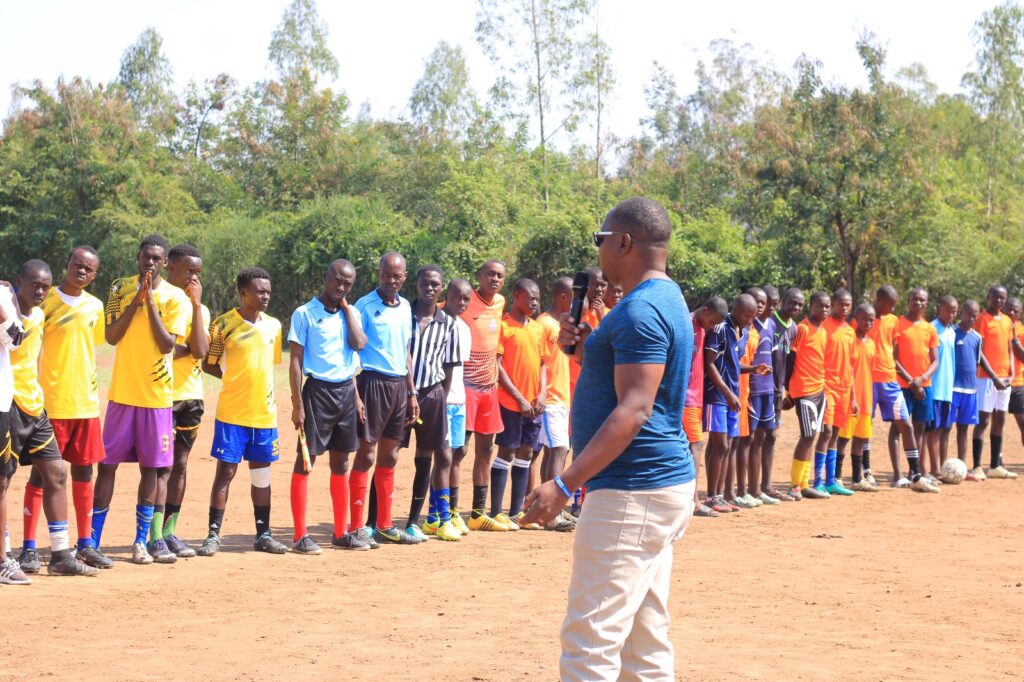Stakeholders in the campaigns against HIV in Nyanza marked World AIDS Day with positivity, thanks to their strategy incorporating a youth-friendly counseling, testing, and treatment approach.
The approach, which has brought together Zipline, in partnership with Elton John Aids Foundation (EJAF) and in collaboration with the County Governments of Kisumu, Homa Bay, and Nyamira entails taking HIV preventive and curative services to the young people to social areas where they can take them up away from the health facilities.
Homabay County Chief Officer Dr. Kevin Osuri says strong partnerships in the campaigns against HIV in the county which still holds the first position in cases of infection in Kenya, were giving way to increased awareness and scaling down of the spread.
“We have witnessed very good cooperation between our partners and the County Government. This has resulted in the decline of infection rates to 15 percent, down from around 17 that was recorded in 2021,” Dr Osuri states.
Speaking at celebrations to mark World Aids Day, Homa Bay County Aids Control Coordinator Stephen Obunga said the county, which is currently ranked as the county with the highest infection rate among youths, has set itself on the trajectory of scaling down the infection rates.
“We are doing well as a county in bringing down the rate of prevalence. He attributed the good results to the entry of Zipline and EJAF as partners in the campaigns against HIV infection among young people.
Caleb Wanjala, the Lead for Community Participation with Zipline says nearly all young people do not wish to visit facilities or places near their homes to access reproductive health services or preventive services like condoms, pre and post-exposure prophylaxis treatment.
Read Also: Kenya to Benefit from Low-Cost Health Insurance Scheme Backed by Swiss Firm and APA
“The situation is so because of the stigma that is usually associated with HIV. From the times when HIV was discovered in Kenya, many people have wrongly been perceiving the disease as a death sentence and those infected are condemned by their closest relatives and even the larger community. That’s why even youths fear to visit clinics that are near places where they are known,” Wanjala says.
The program is blended with what the young people like and that is the attraction to places where they meet professionals who offer them education they need on various aspects surrounding prevention and care when one is infected or at risk of infection.
The counseling, testing and treatment services are mainly taken away from conventional healthcare centers that are situated in hospitals to temporary social places where the young congregate.
“We usually hold football tournaments where they are actively involved. The games pull the targeted people to the various fields where they find the services,” Wanjala says.
Ordinarily, the key stakeholders have been mobilizing youths to meet in special social activities like sporting tournaments where they are exclusively hosted in private booths.
In the arrangement, Zipline delivers the required consumables like condoms, PEPP and PREPP used in the prevention of contraction of the virus.
Counselling
For instance if 200 youths visit a particular mobile youth-friendly clinic, and the need for them to be provided with the post-Exposure prophylaxis arises, the drone technology comes in handy.
“Our drugs and other supplies stores are centrally stored in Kisumu and once an order has been issued, a drone is dispatched to airlift them from the warehouse to the facility where they are needed,” Wanjala says.
According to the needs assessed by the healthcare providers, Zipline delivers the consumables that ranges from ARVs to condoms, blood and water.
Through this initiative, the number of adolescents and youths attending the clinics for comprehensive care services has gone up.
Nancy Kulei, the Sub-county Aids Control Coordinator at Rangwe Sub-county in Homa Bay, who organizes the special clinics, says the number of adolescents that care givers have been serving in the area is ever on an increase.
“Initially, we could serve very few youths in our hospital settings. But given the new approach where we take the services to the people, we have had up to 100 times of the former visits,” Ms Kulei says.
Due to the increased uptake of the HIV preventive and curative services, demand for crucial lab equipment like test kits for HIV and other screenable conditions like cervical cancer and pregnancy has also shot over the last six months the counties have been offering the services.
With the continues partnership, the demand for these services is likely to even go higher, ensuring that the youths are tested at the right time and offered the services needed for healthy and positive living.






More Stories
Lipa Pole Pole by Jubilee Health Makes Health Insurance Affordable for Every Kenyan
Over 50 Patients Receive Free Treatment at Mama Lucy Kibaki Eye Camp
East Africa in the Dock: Panel 54 Breaks Down the Silent Erosion of Freedoms